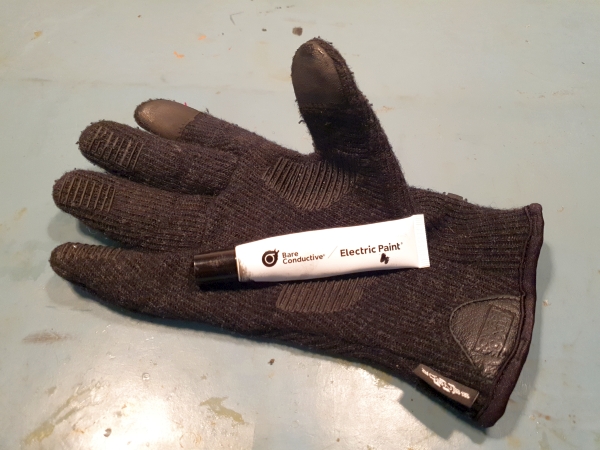Dane.Kouttron
Fixing Touchscreen Gloves [Quick Project]
| What? |
Q-Tip application | Conductive Paints | Conclusion | Image Directory |
Misbehaving Gloves
This is apparent if you try and use a metal screwdriver on a capacitive touchscreen, too conductive does not work. |
|
Conductive paint /
ink
|
|
Applying conductive paint with a Q-Tip
I didnt have a paintbrush on hand, but i did have q-tips, or rather their corner-store brand equivalent. I put a fairly heavy coat on dabbing around as shown (right). I was kinda curious to see if the paint would wear off quickly or not so i figured a thicker coating would be better than a realitivley thin coat. The Q-Tip did work surprisingly well as a paintbrush, as you could push into the gloves, where a paintbrush would have likely deflected more. |
|
Alternate application using the glove itself
|
|
It works!
It works great! You obviously never got the same dexterity with gloves as with bare fingers but even on a smaller phone it worked remarkably well. |
|
Final product
|
<I'm trying a new format with more animated video clips, bare with me I'm sorting out what works well>
(There's other
photos in the photo gallery)
Concluding Remarks:- The conductive paint will dry quickly if not capped correctly, make sure to cap your paints!
- The gloves already had black pads where the conductive areas
were, I imagine this only works well on darker colored gloves.
- Give the conductive paint time to set, while it says 45 minutes on the package, I waited a few hours, mostly to prevent inadvertent 'painting' of my phone screen : ]
If you have questions or comments, ask below or send over an email.
| Comments: |
|
HTML Comment Box
is loading comments...
|
Dane.Kouttron
Rensselaer Polytechnic
Institute
Electrical & Electrical
Power
631.978.1650

